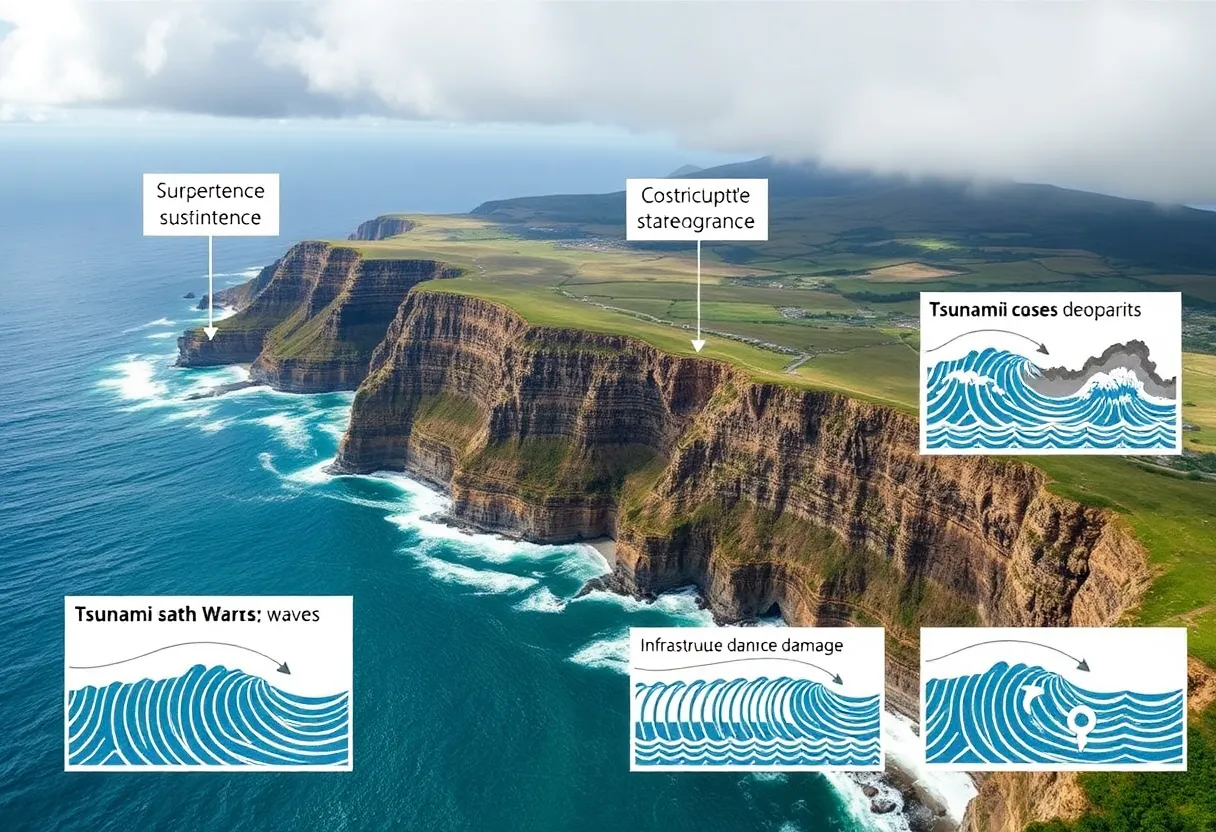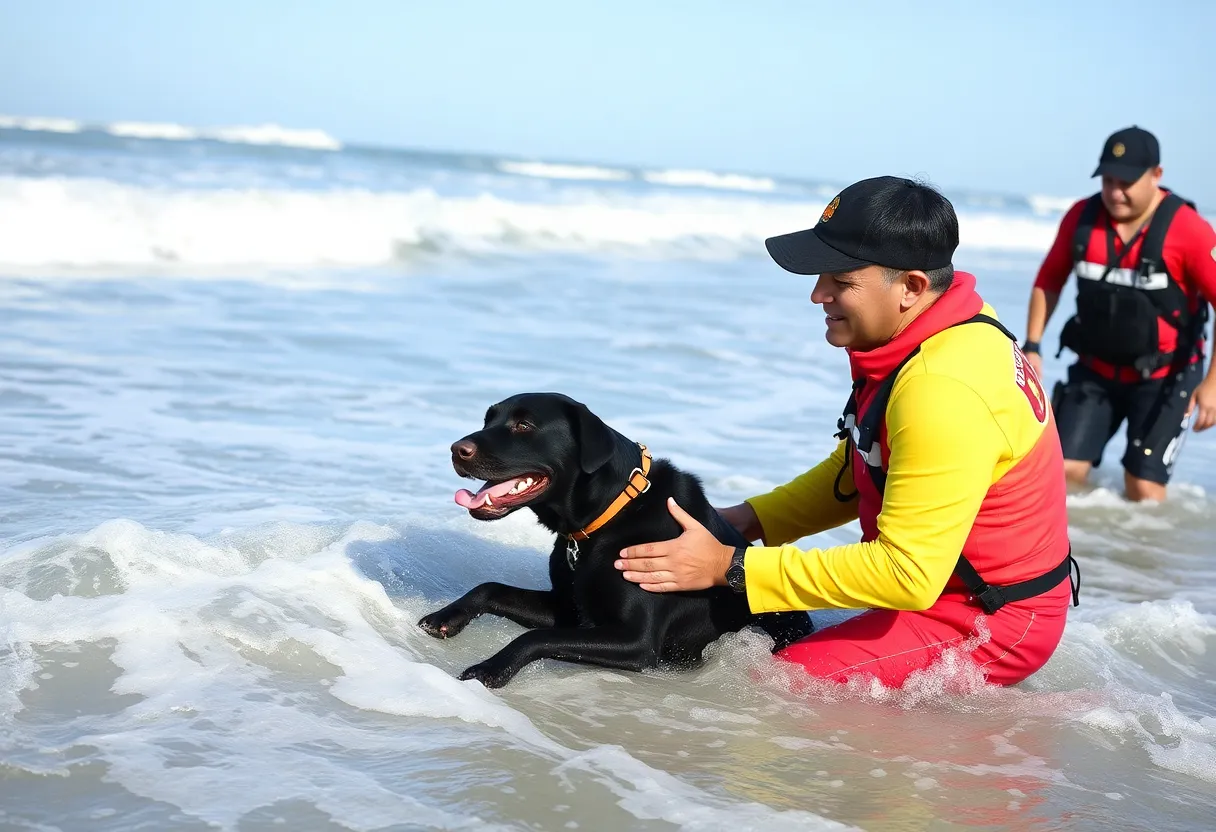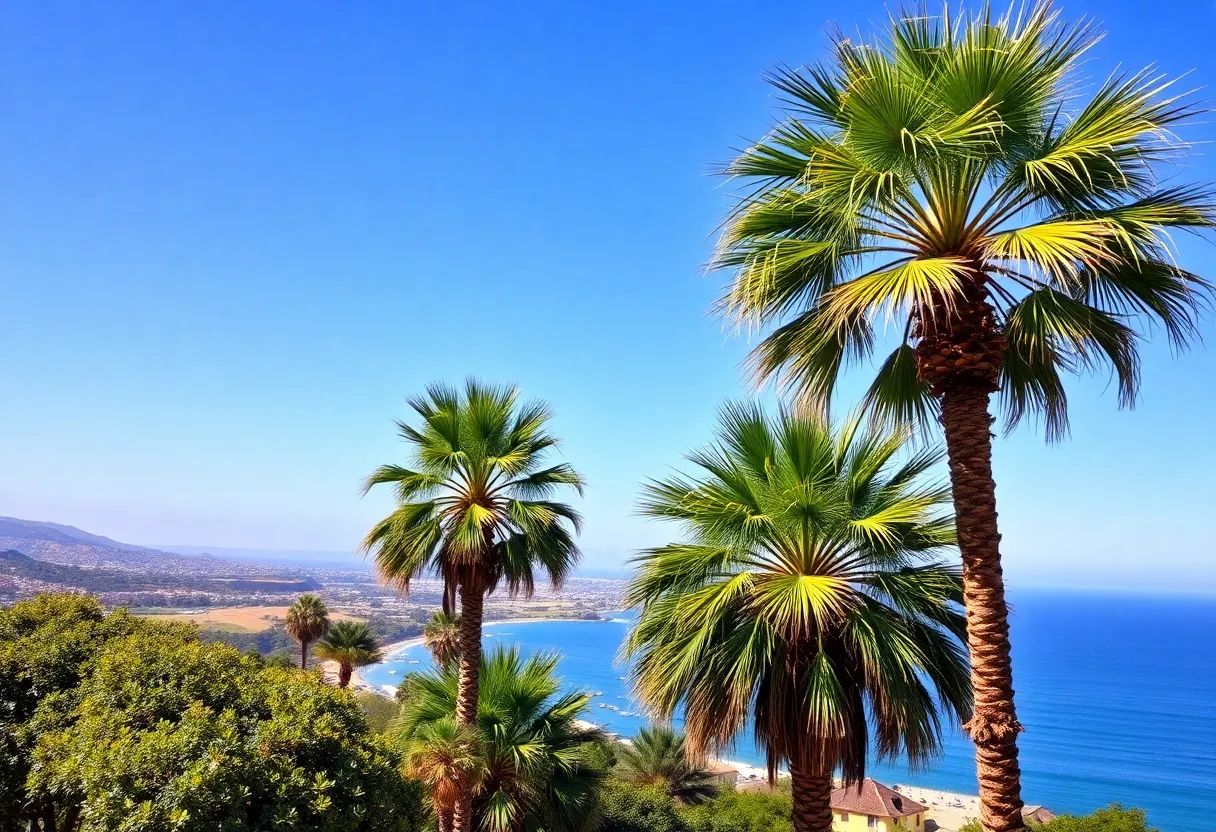News Summary
Oregon is at risk of a significant earthquake along the Cascadia Subduction Zone, potentially causing extreme subsidence and flooding. A recent study indicates that a major quake could affect coastal towns from Northern California to Vancouver, Canada, with severe consequences for infrastructure and residents. The threat is exacerbated by rising sea levels due to climate change, highlighting the need for increased awareness and preparedness in the Pacific Northwest.
Oregon is facing a critical threat from a potential major earthquake along the Cascadia Subduction Zone, a 600-mile long fault line off the Pacific Coast. A recent study warns that this earthquake hotspot could cause significant coastline subsidence, leading areas to drop by over 6 feet. The ramifications would affect a wide range of coastal towns from Northern California to Vancouver, Canada.
The research, published in the Proceedings of the National Academy of Sciences, underscores the risks associated with catastrophic floods and tsunamis that may result from such an earthquake. The study highlights that the floodplain exposure could increase, placing an additional 22,000 residents at risk, and that structures susceptible to flooding could dramatically rise from 13,000 to 36,000. Moreover, the area that could be impacted by flooding may expand by 116 square miles, equivalent to the size of five Manhattans.
Historical data reveals substantial coastal effects from past earthquakes, particularly from a significant event in 1700, which showcased severe subsidence and widespread destruction throughout the region. Evidence suggests that previous quakes have caused coastal forests and entire villages to sink into the ocean.
Current scientific projections estimate that the probability of a major earthquake, with a magnitude of 8.0 or greater, occurring in the Cascadia Zone over the next 50 years stands at approximately 15%. For the southern section of the fault, this probability could rise notably, with estimates reaching 37-42%.
In the event of a significant quake, tsunami waves could reach heights of up to 100 feet. The impact would likely be devastating, necessitating extensive reconstruction of crucial infrastructure, including bridges, power lines, and essential services.
Coastal towns such as Seaside, Oregon, and Westport, Washington, may experience flooding every 100 years after a quake. Compounding the hazards, global sea levels have increased by 8 to 9 inches since 1880, with projections suggesting further rises of 10 to 12 inches by mid-century. The threat posed by climate change may also worsen the situation, as it drives rising sea levels that enhance flood risks following an earthquake.
Examination of historical fossils demonstrates that previous earthquakes along the Cascadia Subduction Zone have instantaneously lowered the land to tidal mudflats. Current land uplift in sections of the Pacific Northwest could be entirely negated by subsidence during a major quake. The long-term impact on coastal communities could render numerous areas uninhabitable.
The potential flooding risks would further extend to critical infrastructure, affecting essential services such as highways, airports, and wastewater treatment plants, potentially compromising the safety and well-being of residents across the region.
As scientists continue to study the Cascadia Subduction Zone, it is vital for communities in the Pacific Northwest to be aware of these escalating risks and to prepare accordingly to minimize the catastrophic effects of a significant seismic event.
Deeper Dive: News & Info About This Topic
- NBC News: Cascadia Subduction Zone Earthquake Even Worse Than Feared
- Wikipedia: Cascadia Subduction Zone
- AOL: Cascadia Subduction Zone Earthquake Could Lead to Catastrophes
- Google Search: Cascadia Subduction Zone earthquake
- SFGate: Earthquake Could Sink Pacific Northwest
- Google Scholar: Cascadia Subduction Zone
- San Francisco Chronicle: Cascadia Earthquake Fault Risks
- Encyclopedia Britannica: Earthquake
- Scientific American: Could a Monster Earthquake Actually Sink Part of California?
- Google News: Cascadia Subduction Zone risk

Author: STAFF HERE SAN DIEGO WRITER
The SAN DIEGO STAFF WRITER represents the experienced team at HERESanDiego.com, your go-to source for actionable local news and information in San Diego, San Diego County, and beyond. Specializing in "news you can use," we cover essential topics like product reviews for personal and business needs, local business directories, politics, real estate trends, neighborhood insights, and state news affecting the area—with deep expertise drawn from years of dedicated reporting and strong community input, including local press releases and business updates. We deliver top reporting on high-value events such as Comic-Con International, San Diego County Fair, and San Diego Pride Festival. Our coverage extends to key organizations like the San Diego Regional Chamber of Commerce and United Way of San Diego County, plus leading businesses in biotechnology, healthcare, and technology that power the local economy such as Qualcomm, Illumina, and Scripps Health. As part of the broader HERE network, including HEREAnaheim.com, HEREBeverlyHills.com, HERECostaMesa.com, HERECoronado.com, HEREHollywood.com, HEREHuntingtonBeach.com, HERELongBeach.com, HERELosAngeles.com, HEREMissionViejo.com, and HERESantaAna.com, we provide comprehensive, credible insights into California's dynamic landscape.





